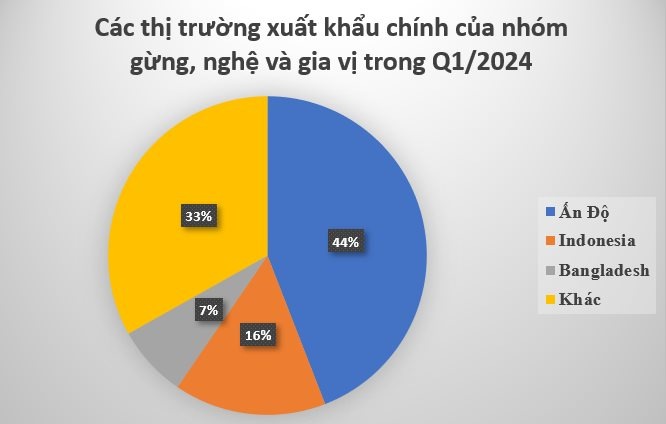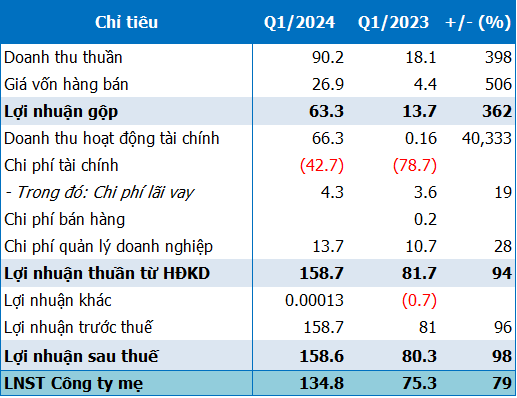
Illustrative image
According to the Vietnam Pepper Association (VPA), in the first quarter of 2024, Vietnam exported 8,499 tons of ginger, turmeric, and other spices, earning over 14.6 million USD. Compared to the same period last year, export volume decreased by 33.5% while export value decreased by 1.4%.
The main export markets for ginger, turmeric, and other spices from Vietnam include India with 3,748 tons, accounting for 44.1%. Indonesia ranked second with 1,314 tons, accounting for 15.5%. Bangladesh and the US were Vietnam’s third and fourth largest importers with 620 tons and 317 tons, respectively, accounting for 7.3% and 3.7%.

Ginger is a familiar culinary item in Vietnam, but it is highly sought after and commands a high price abroad. Ky Son district (Nghe An province) is considered the “capital” of Vietnamese ginger. Thanks to the suitable climate and soil conditions, Ky Son ginger has superior quality and a particularly strong flavor compared to ginger from other places. The Ky Son ginger variety is a native variety, consisting of two main types: buffalo horn ginger and wild ginger.
In addition to being a valuable export item, ginger is also a versatile plant, with each part benefiting human health, such as dilating blood vessels, promoting the sweating process, helping to warm the body from within, having a cold-relieving effect, being used in tea, and as a spice for dishes.
Turmeric belongs to the same spice group as ginger. Turmeric originated in India, and although it is common in Vietnam, it is a rare and difficult-to-find spice in the world, found only in a few tropical countries such as India, China, Vietnam, Thailand, Myanmar, and Nigeria. Vietnam is one of the countries with the largest turmeric cultivation area in the world, with over 50,000 hectares (as of 2021), mainly in the Central and Central Highlands provinces, such as Quang Nam, Quang Ngai, Gia Lai, Kon Tum, Dak Lak, Dak Nong…
Vietnam is currently ranked third in the world in the supply and processing of spices after India and China. The entire Vietnamese spice industry has 14 factories with advanced deep processing technology. In 2023, Vietnam exported black pepper, cinnamon, star anise, chili, cardamom, ginger, turmeric… reaching 1.257 billion USD.
Specifically, exports of turmeric, ginger, and other spices reached 34,976 tons with an export value of 49.3 million USD, a sharp increase of 222.4% compared to 2022. China was the largest importer of this group of goods from Vietnam with 10,271 tons, a sharp increase of 437% compared to the same period. Bangladesh was the second largest market with 6,585 tons, a sharp increase of 100%. India ranked third with 4,394 tons, up 50%, and Laos reached 2,927 tons, up 2,401%.
The VPA forecasts that in the next 5 years, Vietnam’s total spice export turnover will reach 2.2 billion USD. Vietnam is currently ranked first in the world in production and export. However, in the context of increasing competition and favorable market fluctuations for other crops such as coffee and durian, the area and output of Vietnamese spices are decreasing.











































